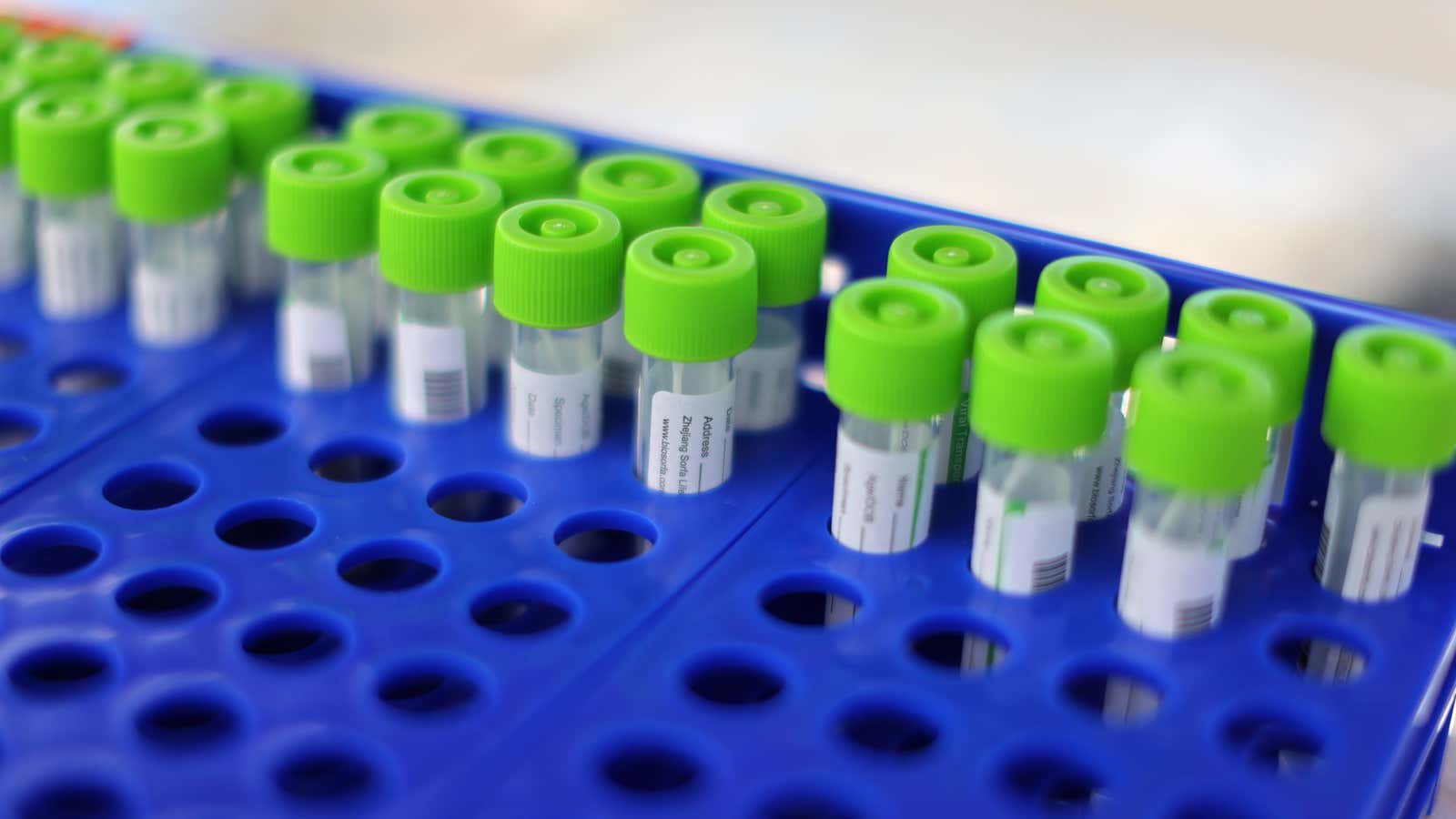Without a uniform, enforceable Covid-19 strategy in the US, many workplaces—including the US Capitol—have been left to their own devices to design a safer return to the office. The easiest and cheapest way to do so? Rely on frequent testing of in-person employees.
Since November, US federal lawmakers and their staff have routinely received a Covid-19 test as they enter the building when Congress is in session. The test of choice has been a polymerase chain reaction test—which checks for the genetic material from SARS-CoV-2—from Curative, a California-based biotech startup, which turns around results in roughly 12 hours.
But on Monday, Jan. 4, the US Food and Drug Administration released a warning that Curative’s tests were producing an alarming number of false negative results—suggesting that several individuals who had been told they don’t have SARS-CoV-2 are actually carrying the virus, and potentially infecting others. In other words, Curative’s tests aren’t as sensitive as the FDA thought when it granted the product emergency use authorization back in April 2020. In its warning, FDA stated that those who have taken a Curative test may want to talk to their healthcare providers about getting retested.
While this is alarming for lawmakers and any of the hundreds of thousands of people who have taken Curative tests across the country—the tests have been used by the tens of thousands in Florida, California, and other states—it’s not all that surprising. If anything, the FDA’s warning about Curative’s tests serve as a warning for all employers that tests alone can’t guarantee safety. And it could point to a better testing strategy for reopening.
“They’re information, but they’re not the holy grail,” says Michael Hochman, an internal medicine physician who teaches at the University of Southern California’s School of Medicine. If you have been exposed to Covid-19 but your test is negative, it’s not an “all-clear,” he says.
In the case of Curative’s lower sensitivity, which reflects a test’s ability to positively identify an infection, Hochman wasn’t all that surprised. “That’s not unique to Curative,” he says. In an effort to make testing widely accessible, FDA granted as many EUAs as it could, without requiring its typical level of evidence from companies. In Curative’s EUA, the company relied on mere dozens of data points, which wouldn’t be enough for a normal FDA clearance or approval. “The bar has been set really low,” says Hochman.
That doesn’t negate the fact that in general, PCR tests are the best tool doctors have to identify the presence of the SARS-CoV-2 virus in an individual. But they’re most effective when used in very specific situations: According to its EUA, Curative’s tests were designed for “individuals suspected of Covid-19 by their healthcare provider”—or symptomatic cases, in other words. And doctors don’t take these results as gospel: Hochman says he’s seen quite a few patients with “textbook” Covid-19 cases, characterized by a pneumonia with a loss of taste and smell, who have tested negative. In these instances, he’s proceeded to treat them as if they have Covid-19.
In general, the more evidence you have to believe you have Covid-19—perhaps you’re coughing and you know you’ve been exposed to an infected person—the more likely you can trust your results to be accurate. PCR test results are more likely to be accurate the longer the virus has to replicate in your body; it can take two to five days after exposure to the virus for it to become detectable in your mucus or saliva.
So when it comes to work, PCR tests have obvious pitfalls. But counterintuitively, the trick to effective workplace screening is not simply increasing test sensitivity.
“[Congress is] not necessarily using the most effective test,” Michael Mina, an epidemiologist and immunologist at Harvard, said in an email. Considering that its goal is to send individuals who test positive for Covid-19 home, getting results 12 hours later isn’t ideal. At that point, an infected person could have had contact with dozens or hundreds more people. (Best practice remains that if you have been exposed to Covid-19, you have to act like you have it and quarantine—regardless of your symptoms and test results.)
Instead, Mina advocates for rapid antigen tests. They’re less sensitive in that they have a smaller window for identifying positive cases—roughly a day before or after someone develops symptoms—but they’re more immediately actionable. Results can be turned around in about 15 minutes. To be most effective, a person would have to be tested daily—but theoretically, this is feasible because they’re far cheaper at about $5 per test, compared to PCR tests, which are around $100. “If you are positive, you don’t walk around Congress for the whole work day (or two) before getting your results,” says Mina.
The concern with rapid antigen tests is that their sensitivity might not be as high. But when it comes to detecting the most infectious people or those people who are likely to be spreading Covid-19, the sensitivity of rapid tests is very high—nearly 100% compared to PCR tests. And high frequency means it becomes not just more sensitive but much more effective.
If this pandemic has shown us anything, it’s that one strategy won’t be enough on its own to protect all of us.
